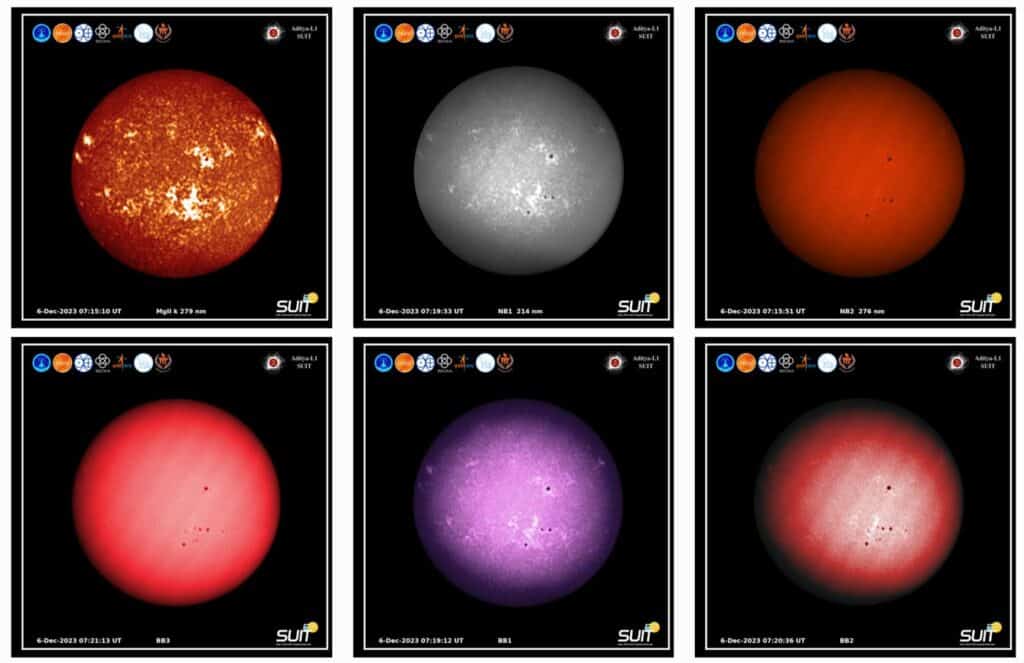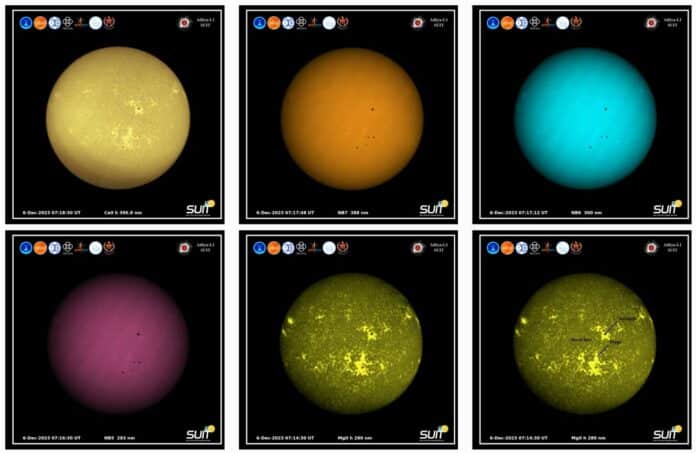Aditya L1 was the first space-based Indian mission to study the Sun. It is placed in a halo orbit around the Sun-Earth system’s Lagrange point 1 (L1), about 1.5 million km from the Earth.
The spacecraft carries seven payloads to observe the photosphere, chromosphere, and the outermost layers of the Sun (the corona) using electromagnetic particle and magnetic field detectors. One of its payloads- Solar Ultraviolet Imaging Telescope (SUIT)- recently successfully captured the first full-disk images of the Sun in the 200-400 nm wavelength range.
SUIT uses a variety of scientific filters to take pictures of the photosphere and chromosphere of the Sun in this wavelength range.

The SUIT payload was powered on November 20, 2023. On December 6, 2023, the telescope took its first light scientific photographs after a successful pre-commissioning phase. Using eleven distinct filters, these exceptional images contain the first-ever full-disk depictions of the Sun in wavelengths between 200 and 400 nm, excluding Ca II h. Studies of the Sun’s whole disk pictures at the Ca II h wavelength have been conducted from several observatories.
The Mg II h image reveals several noteworthy features, including sunspots, plages, and quiet Sun regions. These features offer astronomers unprecedented insights into the delicate aspects of the Sun’s photosphere and chromosphere. Scientists will be able to tighten limitations on the impact of solar radiation on Earth’s climate by studying the dynamic coupling of the magnetic solar atmosphere with SUIT observations.
Under the direction of the Inter-University Centre for Astronomy and Astrophysics (IUCAA), Pune, a cooperative effort was made to build SUIT. ISRO, the Manipal Academy of Higher Education (MAHE), the Indian Institute of Astrophysics Bengaluru, the Udaipur Solar Observatory (USO-PRL), the Indian Institute of Astrophysics, the Centre for Excellence in Space Science Indian (CESSI) at IISER-Kolkata, and Tezpur University Assam were all involved in this partnership.
